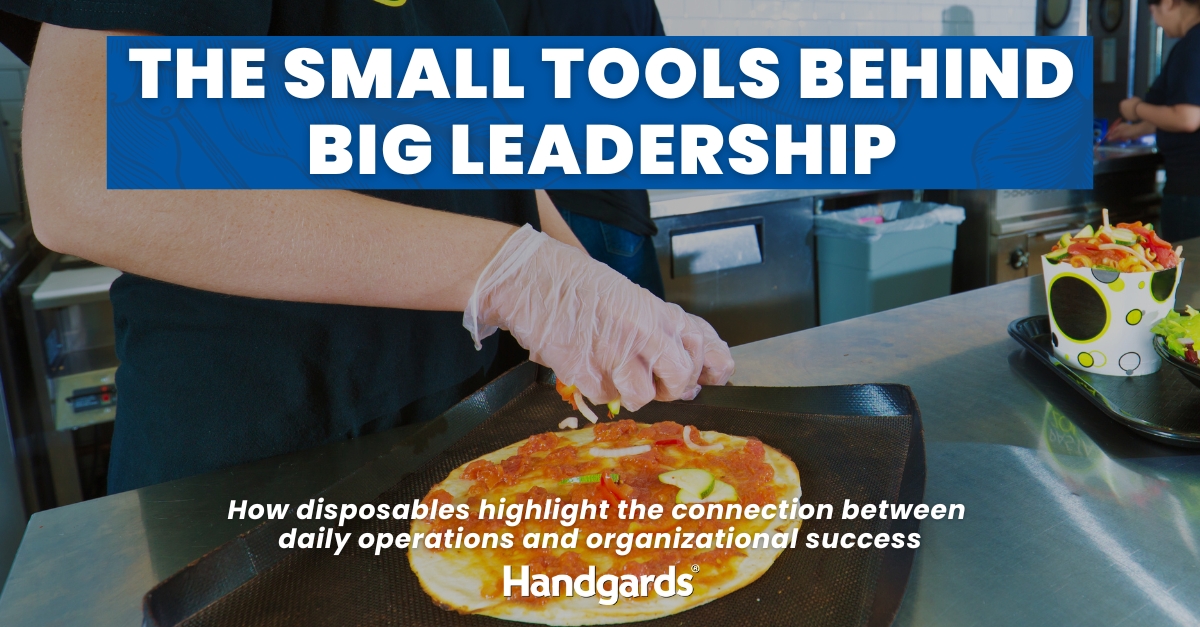Navigating the Shifting Disposable Glove Market in 2025: Flexibility and Foresight

In 2025, the disposable glove market finds itself at a critical juncture. A convergence of global pressures from increased tariffs to shifting supply chains is reshaping how restaurateurs, foodservice operators, and distributors source and select gloves. Now more than ever, understanding the evolving market is essential to maintaining both compliance and profitability.
As always, Handgards will continue to uphold the best interest of its customers and maintain the highest product quality despite fluctuating conditions and supply chain interruptions. We are proud to say that our supply chain has been largely unaffected due to our foresight in securing trusted suppliers outside of China that undergo constant inspection of Handgards personnel on the ground as well as continuing with our national manufacturing capabilities.
Handgards is here to help navigate the uncertainty and volatility of the situation, especially in terms of unstable costs of vinyl (over 70% of the world’s vinyl glove supply is produced in China), offering compelling substitutes like latex, nitrile, and polyethylene (poly) gloves.
Instead of chasing the lowest upfront cost, shift to focus on gloves that reduce waste and improve efficiency. A higher-quality glove that minimizes ripping and replacement can lower total cost-in-use, even if it carries a slightly higher per-unit price. Nitrile gloves offer several benefits over vinyl – let’s examine them in depth:
Benefits of Nitrile Disposable Gloves
1. Superior Strength and Durability
- Nitrile gloves are much stronger and more puncture-resistant than vinyl gloves.
- They can withstand more rigorous tasks without tearing, reducing the need for frequent glove changes.
2. Better Barrier Protection
- Nitrile provides a higher level of protection against chemicals, oils, and infectious agents compared to vinyl.
- This makes nitrile ideal for environments where safety and hygiene are critical (like food prep, cleaning, or healthcare).
3. Enhanced Fit and Comfort, Reduced Hand Fatigue
- Nitrile gloves mold better to the hand after warming with body heat, offering improved dexterity, flexibility, and tactile sensitivity.
- Better fit results in reduced hand fatigue, allowing for more productivity and safety throughout tasks.
- Vinyl gloves, by contrast, tend to fit more loosely, which can compromise grip and precision.
4. Hypoallergenic Properties
- Nitrile is latex-free, making it a safer option for people with latex allergies.
- Vinyl is also latex-free, but nitrile is less likely to cause irritation because it is manufactured to stricter medical and food-grade standards.
5. Longer Wear Time
- Because nitrile gloves are more resistant to punctures and tears, workers can wear them longer without replacement.
- This translates to lower overall glove usage and better value, despite a slightly higher per-unit cost.
6. Compliance and Professional Appearance
- Many food safety and healthcare guidelines prefer nitrile due to its superior barrier properties.
- Nitrile gloves are offered in color-coded options (e.g., blue for food service, black for industrial), helping with compliance, branding, and cross-contamination prevention.
The Bottom Line
The disposable glove market in 2025 is complex and volatile, but not insurmountable. By diversifying material usage, foodservice professionals can protect their operations and even find competitive advantages amid the turbulence.
In this new landscape, flexibility and foresight are the keys to staying one step ahead. Contact your Handgards representative today to see how our solutions can help you stay ahead of the curve.




